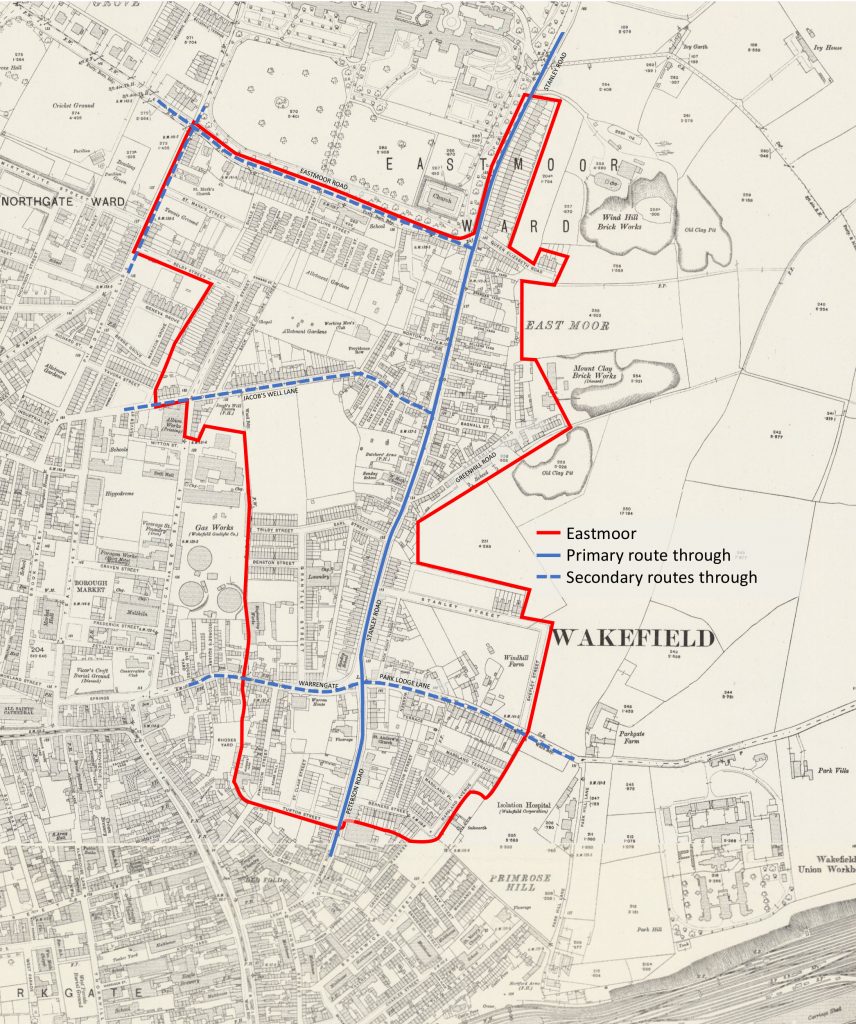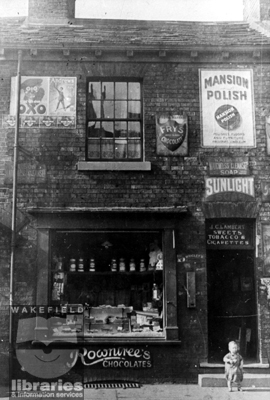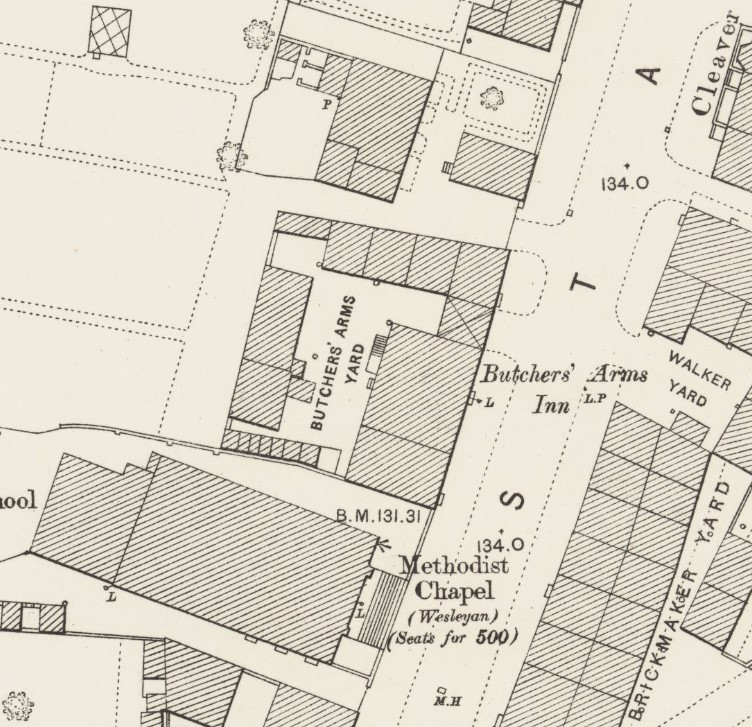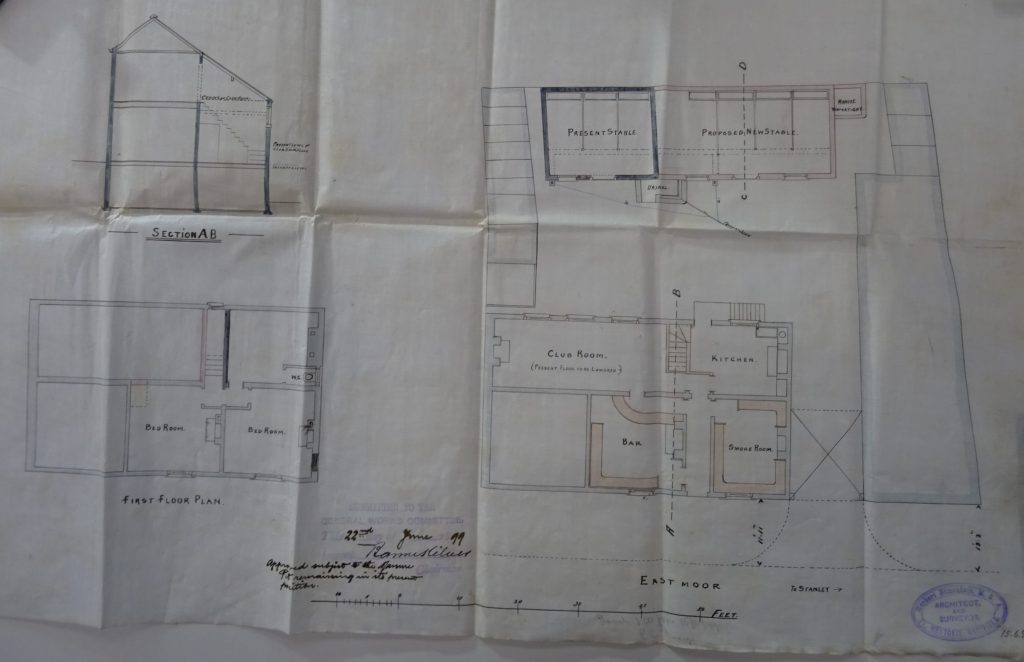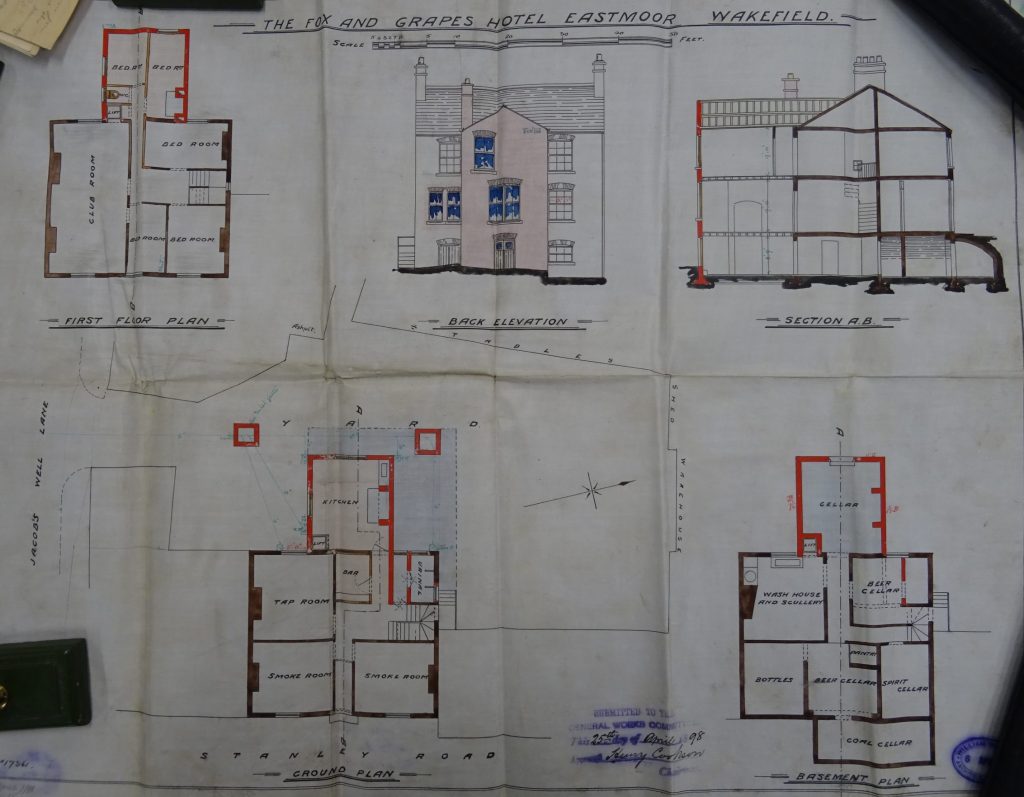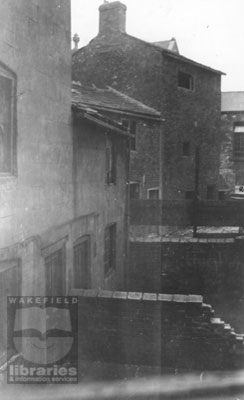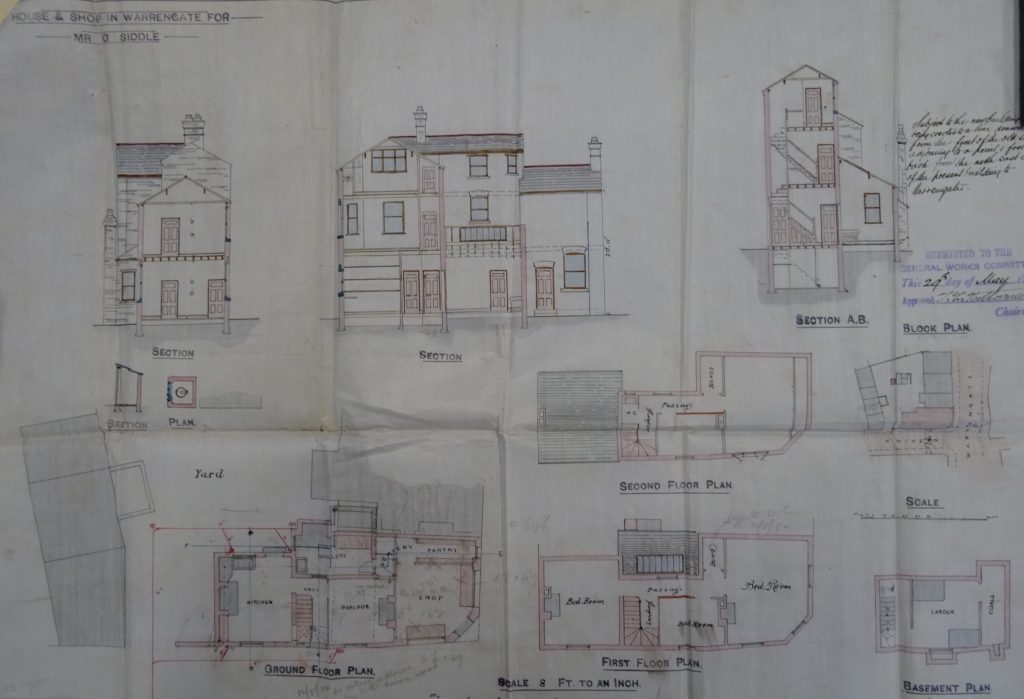Victorian Eastmoor
Introduction
During the Victorian period, the population grew rapidly and so a lot of housing needed to be built in a relatively short time. It can be summarised as follows:
Earlier housing (pre-1866)
- Built in an ad-hoc fashion with courts and yards giving access to properties
- Construction quality was variable, some would say shoddy
- There was no proper sanitation – yards had earth closets, ash pits, communal water pumps etc
- Tendency for some to be overcrowded
Later housing (from 1866, and especially from the 1890s)
- Complied with by-laws aimed at improving construction quality and living conditions
- More uniform approach to urban layouts but the architectural designs could still be very varied between streets
- Facilities improved – outdoor water closets were introduced but most properties still had little indoor plumbing
- Appealed to a wide range of ‘working-class’ people
Eastmoor had a wide range of housing, built throughout the Victorian period, and providing for all needs, from tiny back-to-back cottages to large terraced, semi-detached and detached villas.
These maps can be reused under the Creative Commons Attribution (CC-BY) licence.
Jacob's Well Lane area
One of the longest-standing residences in Eastmoor is the Smith family and their descendants, with a history that spans from the 1850s to 2023.
Railway labourer John Smith, along with his wife and three sons, moved from Habergham Eaves near Burnley to Eastmoor in the mid-1850s. By 1861, the couple lived on Ripley Row with two of their oldest children (one of the three had died) and three Eastmoor-born children, the youngest of whom was John Henry.
By 1871 the family were living at ‘Craven’s Buildings, Swaddling Stones’ with a further three children. Craven’s Buildings were designed by Wakefield architect William Watson in 1866, and named after William Craven who built several houses in Swaddling Stones (now the Jacob’s Well Lane area). The house was part of a row of four-storey terraced houses, each storey having a single room.
The row appears to have been renamed as Oak Street by 1881, at which time John Henry was working as a boiler-maker for Eastmoor’s boiler works, Spurr & Inman. John Henry subsequently married and in 1888, he lived with his wife Mary in Cook’s Buildings on Kitson’s Row. By 1891 they were living at Ash Street with their two children, the oldest of whom was Harry. Ash Street was parallel to Oak Street and had a similar type of housing.
Within a few years, a further three children had been born and the family moved into a house on Pentonville Place (formerly Nelson’s Row), off Stanley Road. Although Mary died in 1905 at the age of forty, John Henry stayed in the house for thirty years. He went on to become one of the founding members of Eastmoor Working Men’s Club. Four of John Henry’s five children married and lived on Eastmoor for their whole lives. Harry followed in his father’s footsteps and became a boiler maker at Spurr Inman, but was fatally injured in an industrial accident in 1931.
In 1930, John Henry moved into a semi-detached house on the newly built Eastmoor council estate along with his eldest daughter, son-in-law and three granddaughters. He passed away in 1936 and was buried in Sugar Lane cemetery in the same grave as Mary and his infant grandson who had passed away ten years earlier. His youngest granddaughter May lived in the same house for 91 years, and her story is included here.


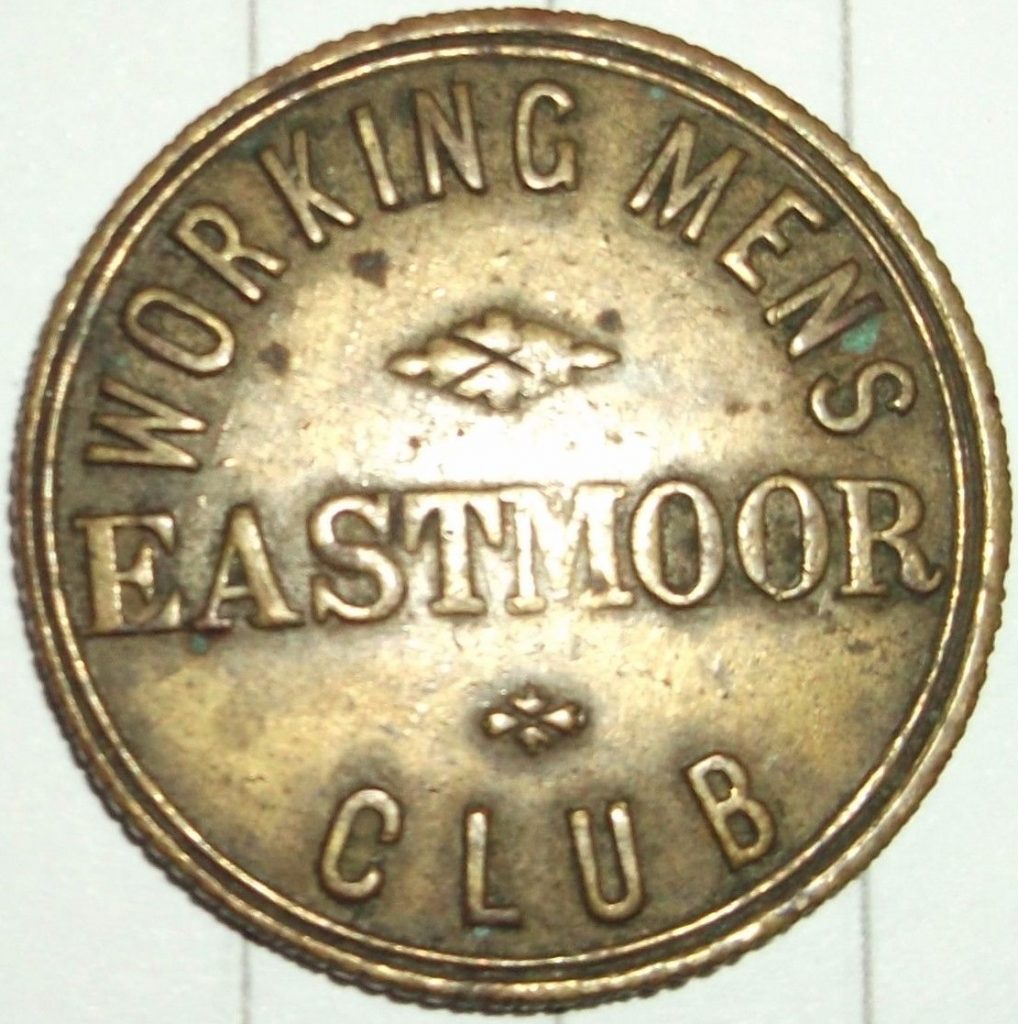
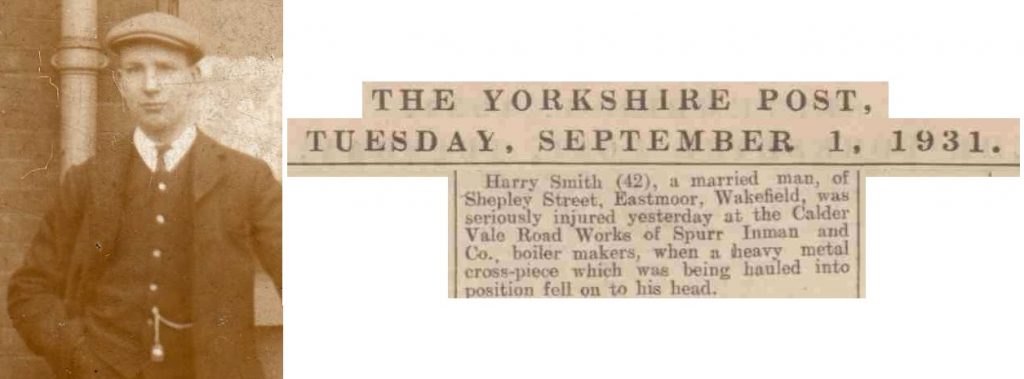
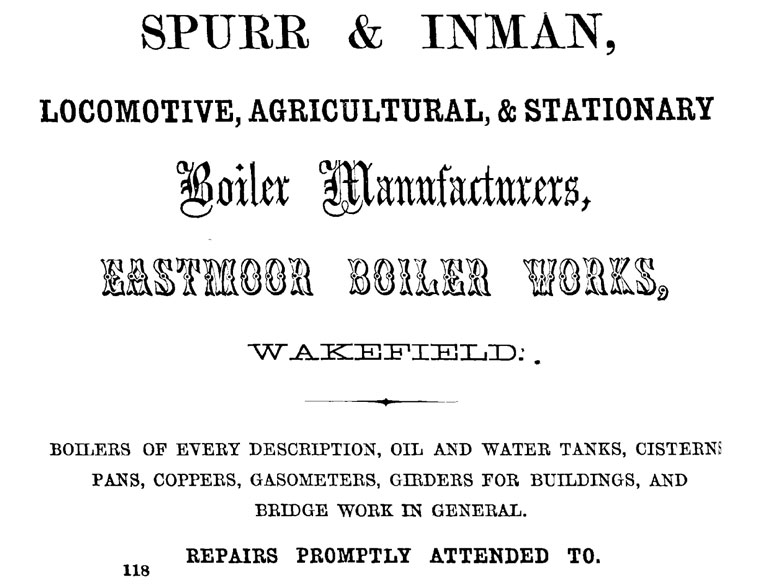
Stanley Road area
Stanley Road was the main route through Eastmoor in the Victorian period. As well as the many houses, shops and inns facing onto the road, there were many yards coming off it, each packed with various types of housing and businesses.

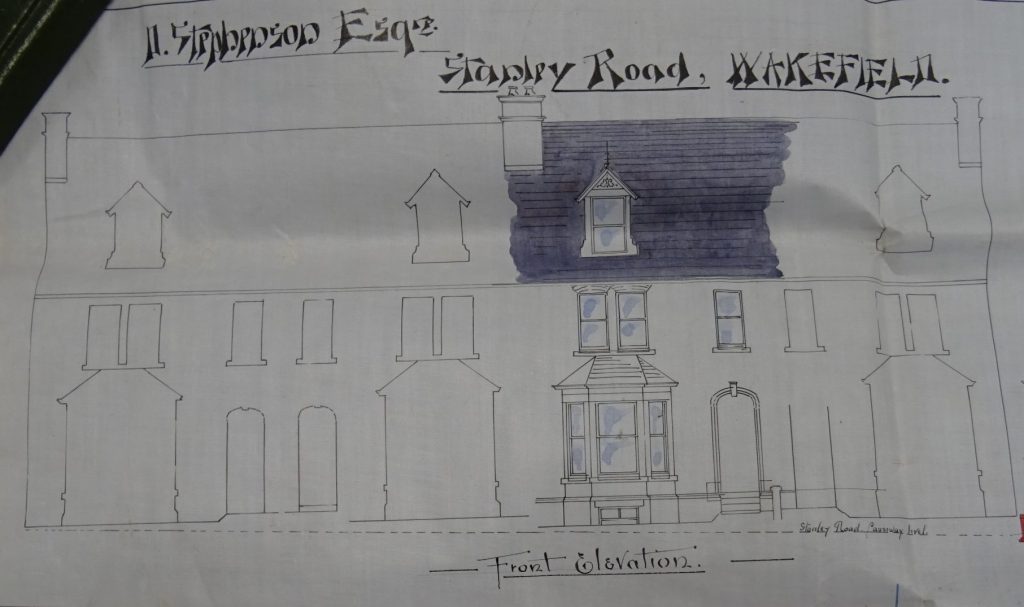
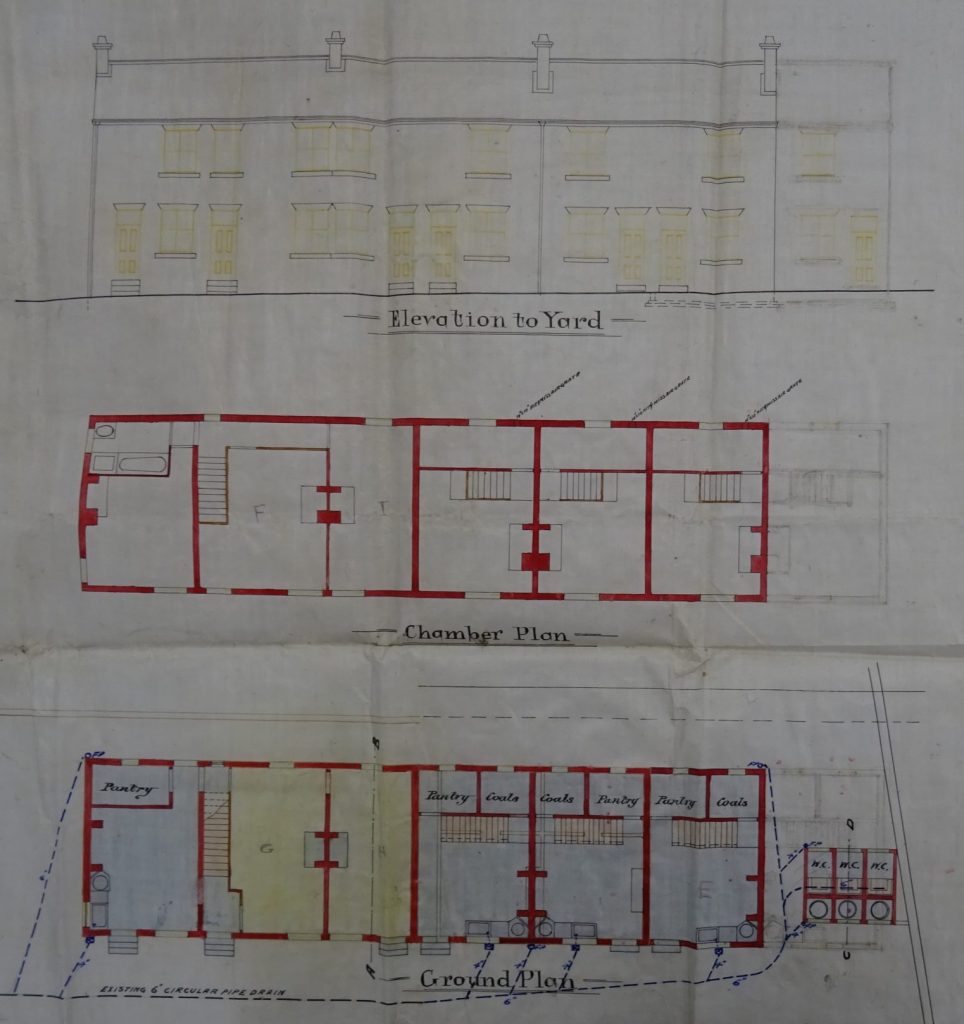
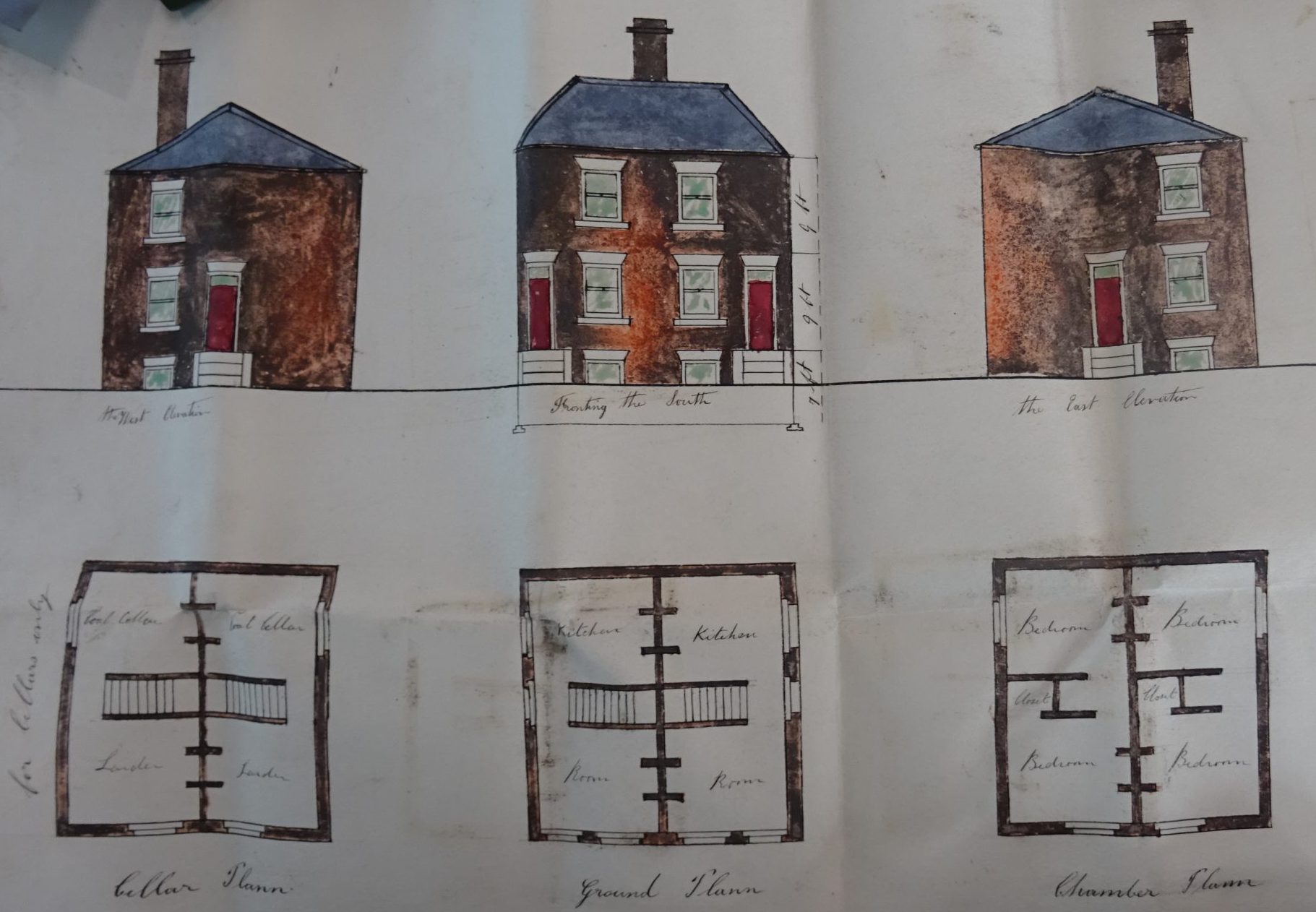
Shops
There were no fridges or freezers in 1890 so people had to buy fresh food every day or two. The Co-op on Stanley Road was particularly important, but there was a wide range of specialist shops including butchers, fishmonger, dairy and greengrocers as well as tailors and boot makers.
In 1890 a tailor and a dressmaker made the clothes that, by 1930, would mostly be bought ‘off the peg’ in a shop, having been made in a factory. Similarly, most boots and shoes were hand made, but by 1930 factory-made shoes just needed to be repaired, so the boot-maker became a repairer.
Some unusual occupations are listed; we might wonder at there being a bird stuffer in 1890 – was it a taxidermist?
Besides the fully licensed inns – The Butchers Arms, The Albion, the Fox and Grapes and the West Riding Hotel – there were a number of other premises which sold only beer. Some were beer houses. Others sold beer in addition to other goods. This came about as a result of The Beer Act of 1830 which removed all duty on beer, and people were encouraged to run what were then called beer houses, for a licence fee which was much cheaper than for a full licence. This distinction between beer-only beer houses and fully licensed pubs selling beer, wine and spirits remained until 1960.
The Butcher's Arms Inn - 79 Stanley Road
The Butcher’s Arms is shown on the 1848 Ordnance Survey map, the earliest available, and the 1851 Census lists the widowed Mary Sellers living there with her three teenage children and a servant. As was common during the 19th century, the inn was used for inquests, and was also a seemingly notorious location for anti-social behaviour and crime. For example, in 1850, two men were charged with being drunk and fighting in Butcher’s Inn Yard and in 1855, two alleged highway robbers stole fish from a man who had been drinking at the inn. However, it was not just those visiting the inn that caused trouble. In 1857, Mary’s eldest son Thomas, who was noted as living next door, was convicted of ‘applying opprobrious epithets’ (verbal abuse) to a couple when they were at the inn and later, at their home.
By 1861, Mary was living with her father, grandchild and a servant, while Thomas had moved to run a pub on Kirkgate. He was living with his wife Susannah, their three young children and a servant at that time, but by 1867, Thomas was living back at the Butcher’s Arms, presumably with his wife and children. The records suggest that a child, Susan was born in early 1870, but by the end of the year, Susannah had died, aged 39. The 1871 Census confirms that Thomas was living with his three children and a servant, but there is no indication of where his young baby was.
Thomas remarried in 1872 and the 1881 Census shows that he was living at the Butcher’s Arms with his new wife Mary, his youngest children Joe and Susan from his first marriage, two more young children and a servant. It seems that Thomas continued to live in the property until at least 1888, but by 1891, his son Joe was running the pub, and living with his wife, their three children, his three younger siblings, and a servant. At some point between 1892 and 1904, the Sellars family finally left the pub, and it was taken over by John Longbottom.
Architectural drawings from 1899 show that there was a club room, bar, smoke room and kitchen at ground floor, and two bedrooms, a WC and another room at first floor. There is another room at each floor without any doors or windows, and this is a probably part of the building that is in separate occupation. The inn stables and three separate houses faced into the Butcher’s Arms yard.
References: Census records; Free BMD; Wakefield Journal , 12.7.1850, p2; Wakefield Journal and Examiner, 1.5.1857, p5; Wakefield Journal and Examiner 4.5.1855, p8.
The Albion Inn - 94 Stanley Road
The earliest record of the Albion Inn comes from the 1901 Census when Charles B Swaine, his wife Jane Ann, and three children under the age of seven were resident. Charles had previously run the Wheel Inn at Stanley. By 1910, The Albion Inn was owned by the executors of Albert Swaine, but Charles Baker Swaine was still the licensee. The 1911 Census records Charles, Jane Ann, son Charles, and two younger children, plus Charles’s sister. However, by 1912, the Inn was being run by Ezra Sidwell who remained there until at lease 1927, despite the Samuel Smith Old Brewery (Tadcaster) Ltd taking ownership in 1926. By 1937, the licence was provisionally removed from the present premises so it could be reinstated at the new premises which were to be erected on Stanley Road.
Fox and Grapes Inn - 107 Stanley Road
The earliest record for the Fox and Grapes Inn appears to date from 1822. As well as being a drinking establishment, the inn was used for inquests, auctions, civic meetings and electioneering. The following occupants were recorded:
1822 Jas. Haldane, East Moor
1829 Jonathan Eastwood, East Moor
1834 John Lodge, East Moor
1857 Samuel Nichol, Eastmoor
1893 Amos Walter Beaumont
1910 Charles Walker (Brewer’s Licensee, owned by Beverley Bros Ltd)
1910 John Richard Teece
The West Riding Hotel - 129 Stanley Road
The West Riding Hotel stood at the junction of Jacob’s Well Lane and Stanley Road, roughly where the West Yorkshire Ambulance Service building is now. It was originally named The Jolly Sailor and was a beer house from 1827 – 1857, after which it became a Public House. It was demolished in the late 1960s when the area around the Jacob’s Well Lane and Stanley Road junction was redeveloped.
References: Baines Directory, Pigot’s Directory, Kelly’s Directory, Wakefield 1910 Alehouse Licences, West Riding Alehouse Licences.
The Yards
In contrast to the long-standing residency of some families, and the entrepreneurial spirit of business owners, the lives of many people could be hard and involve regular house moves. Dr Radcliffe noted in 1869 that
“Ill-constructed and ill-arranged cottages… have deteriorated so as to become… hardly fit for human residences… I especially instance the state of… Camplin’s Yard.”
Sarah Bainbridge lived at Green Hill, near Camplin’s Yard, with her brother Mark and daughter Ann in 1862. Sarah and Mark became ill with typhoid and died six days apart. Ann was sent to the workhouse. At Sarah’s inquest, it was found that Sarah was let down by doctors and the Poor Relief Officer, and that neighbours didn’t help for fear of catching the disease. The doctor noted that Sarah was suffering from dirt as well as disease, and that the ashpits and privies were foul. Her death certificate recorded heart disease and typhoid fever accelerated by want of attention and food.
Camplin’s Yard also appears to have been notorious for social unrest and crime. In 1872, Ruth Hollings was strangled by her partner Isaac Townsend who later took his own life in the yard, and in 1877, Jane Challoner, of ill repute, was imprisoned for assaulting a neighbour.
The relieving officer and poor’s rate collector in 1890 were part of the Poor Law regulations for people who were, or were becoming, destitute due to unemployment, illness, death of parent / partner, or old age. They sought help (relief) at home or in the workhouse, which was situated on Park Lodge Lane.
References: ‘Cheaper by the yard: Wakefield Yards, p24, in Aspects of Wakefield 3, edited by Kate Taylor; Foul deeds and suspicious deaths in Wakefield by Kate Taylor p57-60; Wakefield Examiner 13.7.1872, p8; WWRH 18.8.1877, p3.
Warrengate area
Warrengate was a more mixed area than other parts of Eastmoor, As well as houses, shops, inns and small businesses, it also had a large model dwelling house and a range of larger industrial premises.
Pincheon Street
Pincheon Street was one of the main residential streets in the Warrengate area.
1861
The 1861 Census listed 37 entries. The number of occupants for each property varied from one to seven:
- One woman, a widow, lived alone.
- Where occupancy was two this was commonly a married couple or an adult living with a family member, for example, an adult unmarried man living with his adult unmarried sister, or a widow / widower living with their child or grandchild. If the other occupant was listed as an unrelated lodger they had a job and presumably contributed to the household income.
- In households of three or more, a married couple and their children or grandchildren was the commonest combination, although some also included working lodgers.
The majority of people were born in Wakefield, but other birthplaces included nearby villages and towns (Alverthorpe, Chevet, Heath, Horbury, Normanton, Stanley, Thornes, Leeds, Oulton, Pontefract, Earlsheaton, Gowdal, Woodhouse, Lofthouse, Chevet in Wakefield, Stanley, Rothwell, Upton, Hunslet, Huddersfield, Hulley near Rotherham Bingley, Shipley, Bailden, Tadcaster and Hull). Birthplaces outside of Yorkshire included Ireland, Bristol, South Cove, Lincolnshire, Middlesex Ferry, Norfolk and Wiltshire.
Seven heads of household were widows, one of whom was listed as the owner of house.
The men worked as a cabinet maker, carpet weaver, lithographic printer, millhand, nail maker, two plasterers (father and son), engine fitter, five shoe makers, master turner, nine general labourers, two plumbers/glaziers, two mechanics, cooper, two maltsters, three boot and shoe makers, marble mason, master mason and builder, apprenticed mason, tailor, iron moulder, coal miner, gardener, railway guard and master whitesmith. One was listed as a Chelsea Pensioner. The household of a master mason & builder had three apprenticed masons aged between fourteen and twenty.
Most wives had no occupation listed, but among the women there were three domestic servants, two sisters, keepers of infant school, a washerwoman, a child’s nurse, a factory hand, two milliners, two bonnet makers and furrier, a drape maker, a muffin baker and a spinner of worsted.
Scholars ages ranged from four to sixteen regardless of gender but one thirteen year old was a shoemaker.
1871
The 1871 Census lists nineteen households.
- Five of the six single occupancy properties were listed as male lodgers with jobs of brewer, labourer, boot and shoe maker, cordwainer, and sweep.
- The lone woman was a laundress.
- Seven households were headed by a woman; six were widowed and had family members living with them.
- Several houses had a high number of occupants with three properties containing six people, one containing seven, one containing eight and another with nine people.
As before, most of the residents were born in Wakefield or nearby towns and villages (Woodhouse, Horbury, Ossett, Oulton, Pontefract, Wrenthorpe, Barnsley, Leeds and Upton). Other birthplaces included Liverpool, Lincoln, Lincolnshire, Nottinghamshire, Leicestershire, Staffordshire, Suffolk, London, Essex and Portsmouth.
The men worked in a variety of occupations. There was a mason, butcher, six labourers, mason’s labourer, hawker, engine minder, ropery worker, engine fitter, tailor, turner and fitter, cabinet maker, cordwainer, locomotive fireman, two railway labourers, brewer, sweep, boot and shoe maker, and whitesmith.
Among the women, there was a bonnet maker, woollen cloth weaver, housekeeper, laundress, two former cooks, a machinist, domestic servant, and a charwoman.
A 56 year old male, head of household, railway labourer was listed as ‘deaf’ and a 76 year old female head of household was ‘blind from cataracts’.
The families
The Whitehead family had a long history in Pincheon Street off Warrengate. Shoemaker David, his wife Ann and their two young children were first recorded in the 1841 census. A further two children were born by 1851 and another by 1861. David’s two oldest sons had joined him in the shoe-making trade by this time. A decade later, his oldest daughter and middle son remained unmarried at home, however, by 1881, David’s two daughters were working as seamstresses, and his youngest son David was a general labourer. In 1891, David, Ann and their unemployed, unmarried daughters remained in the house. Ann subsequently died, leaving 87 year old David with his married youngest son, a daughter and a grandson. David died in 1892.
Born in Wakefield, the 1841 Census records Edward Latham as a stonemason with six children. By 1851 he was a marble mason with four children at home, and in 1855 he appeared in the electoral register as having freehold land on Northfield. The 1861 Census shows he continued to live in the same house with one unmarried daughter and three nephews who were apprenticed masons, and a decade later, he was living with his unmarried daughter and a twenty year old apprentice mason. By 1881, Edward, 77 was a widower and had moved to Sandal Magna to live with his widowed daughter, her five children and two boarders.
In 1861, Jonathan Rushworth, a 46 year old boot maker from Shipley was living in Pincheon Street with his wife Mary, son Joshua who was also a shoemaker, daughter Hannah Maria, a factory hand, and three younger children listed as scholars. By 1871 Jonathan and Mary lived with their two unmarried daughters who worked in a worsted mill. Ten years later, Jonathan was a widower who lived alone, and he was listed as a cordwainer. He died aged 72 in 1887.




